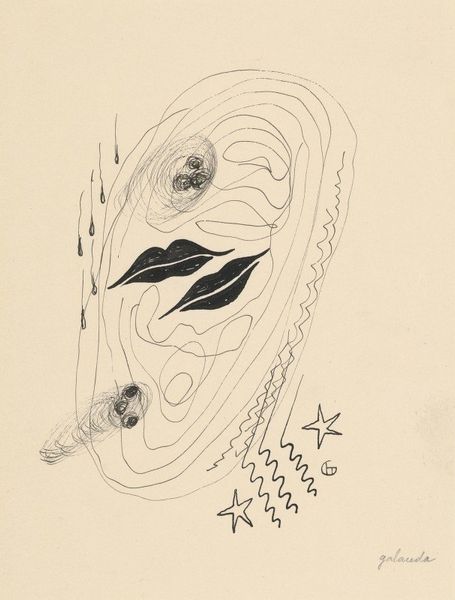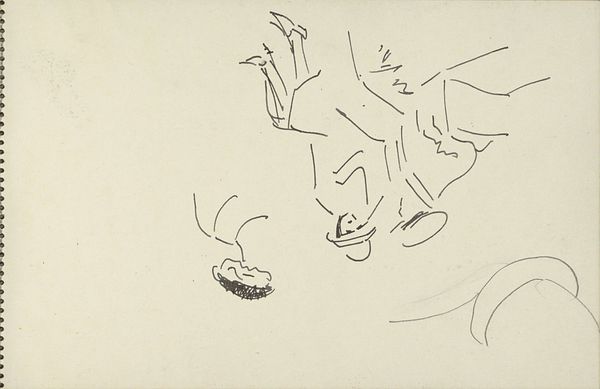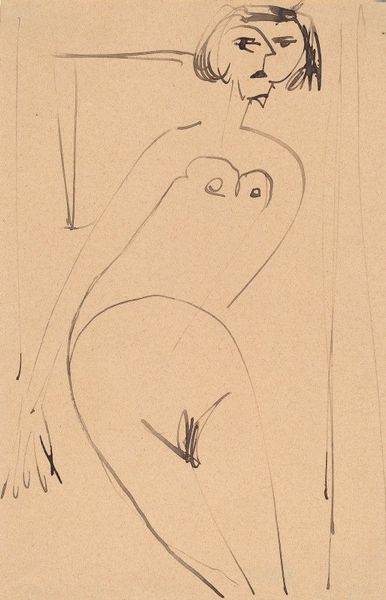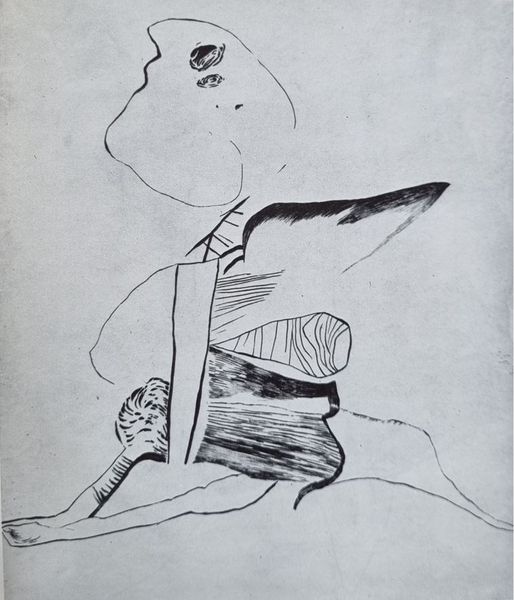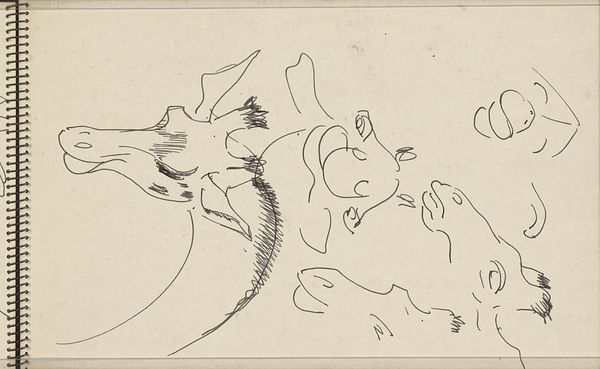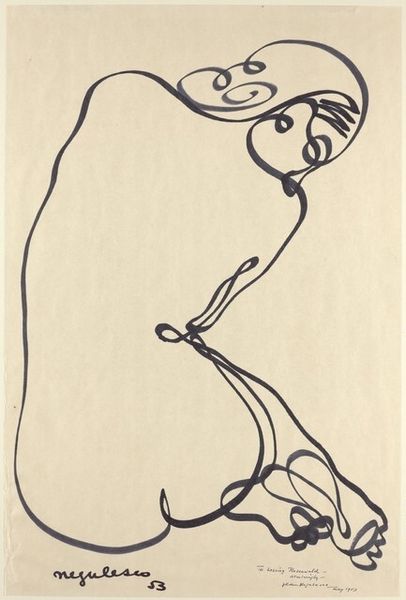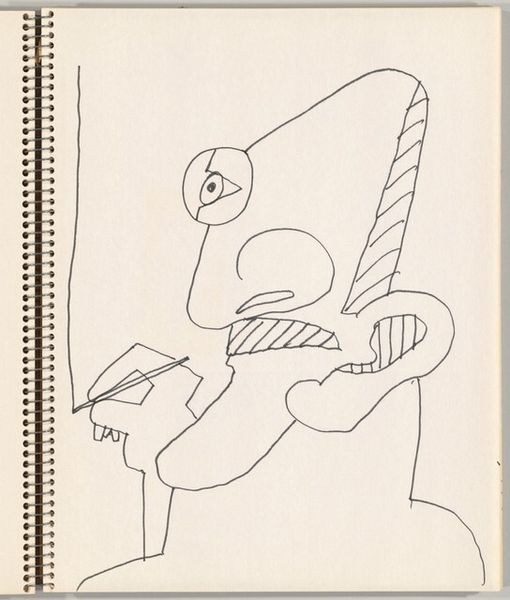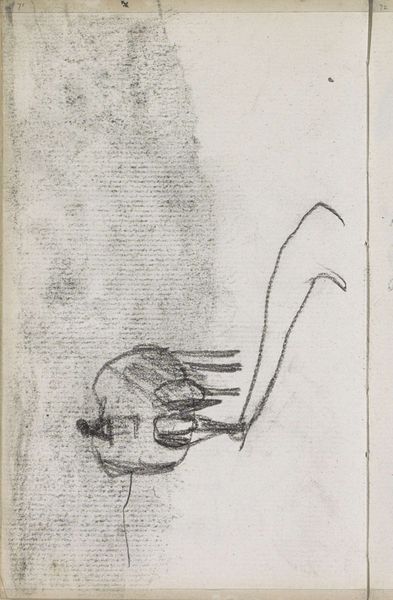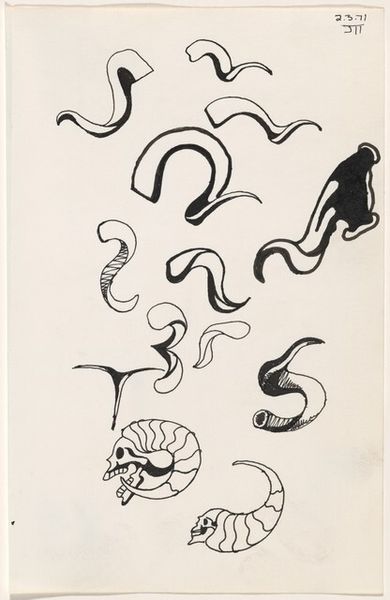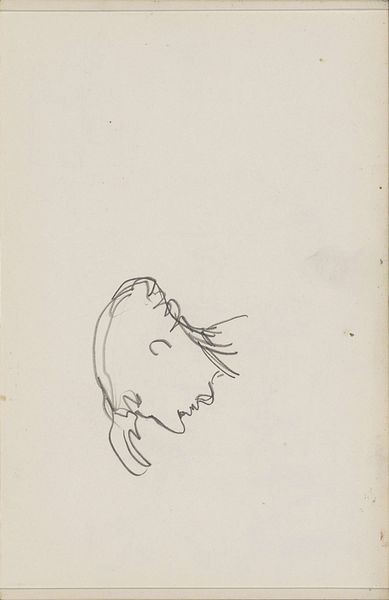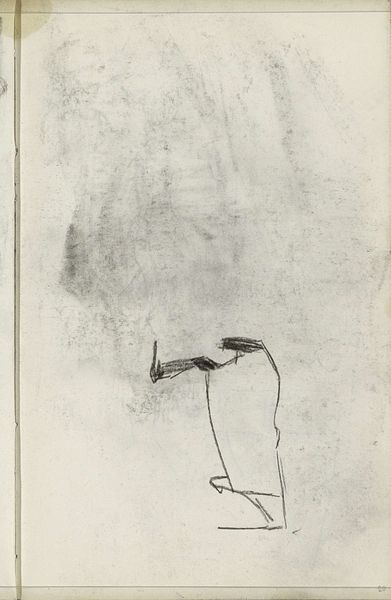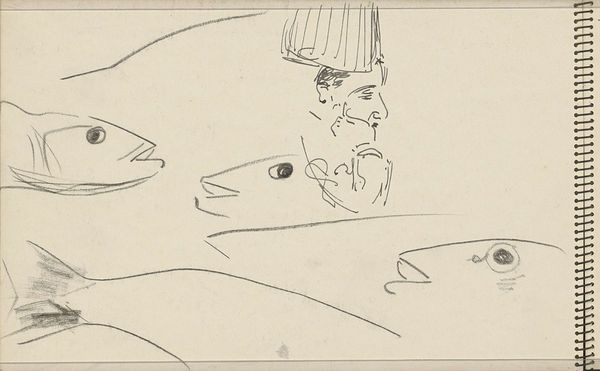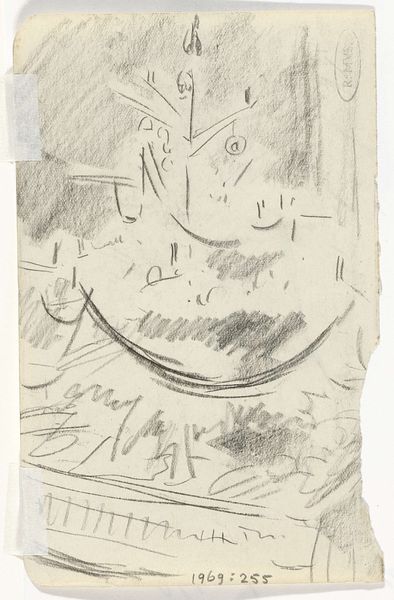
Copyright: Public Domain: Artvee
Editor: So, this is "Volcano" by Mikuláš Galanda, done in 1930 using ink and pen. The stark contrast and simple lines give it an almost unsettling quality. It feels quite symbolic. What’s your interpretation of the imagery at play here? Curator: This work emerges from a crucial period of modernist ferment, particularly within the context of Slovak art searching for its own visual language, freed from academic conventions. What draws your attention most about the symbolic aspect? Editor: Probably how the volcanic shape transitions almost seamlessly into the hand, with the clover. Is it a statement on nature and industrialization, maybe? Curator: It certainly speaks to broader socio-political tensions of the time. Notice how Galanda juxtaposes natural imagery with a delicate representation of the hand and, prominently, "L’AMOUR" written below it. It’s tempting to consider how this era valued innovation but maybe had a naive view about the natural world. Editor: Ah, interesting. So, the placement of "L'AMOUR" makes me think that, potentially, he believed in the necessity of passion when handling big changes like that. Curator: That’s a fascinating insight, particularly when considering the artistic climate he was a part of. Can art truly impact policy, or how the public interprets innovation and cultural transformation? Editor: That’s a good question…I'm thinking about agitprop theatre right now, so I’m inclined to believe it has the potential to sway opinions! Curator: Precisely! This artwork becomes a reflection of the dialogue between art, societal shifts, and public sentiment during that time. Editor: I’m walking away thinking more about the social function of art and Galanda’s awareness of this responsibility. Curator: Indeed. Analyzing how the historical, cultural and political context shaped the artwork offers new insight on its value, beyond pure aesthetics.
Comments
No comments
Be the first to comment and join the conversation on the ultimate creative platform.
